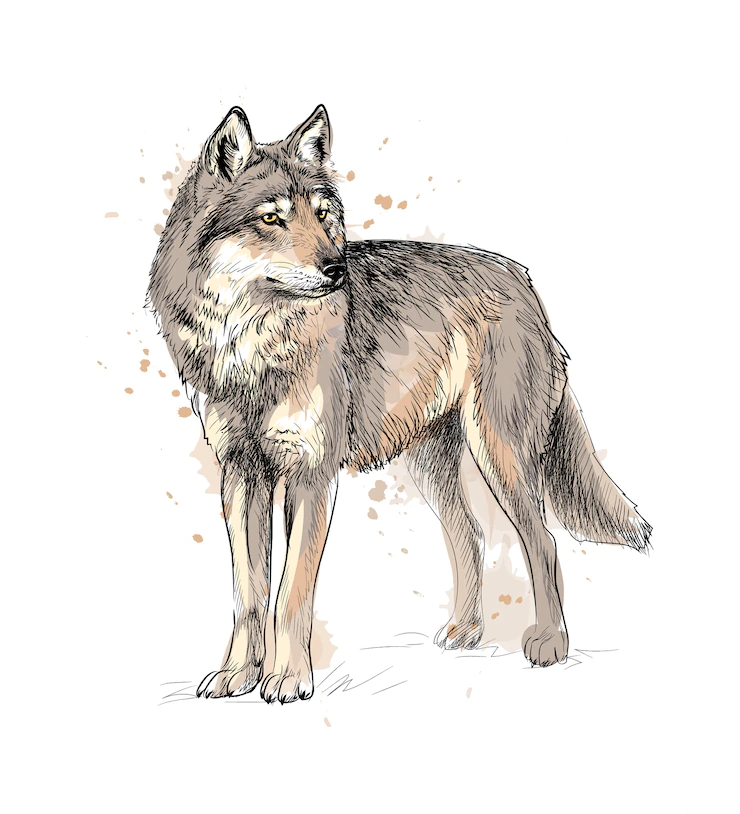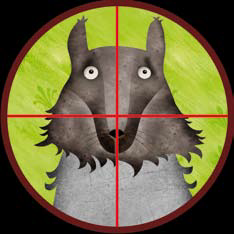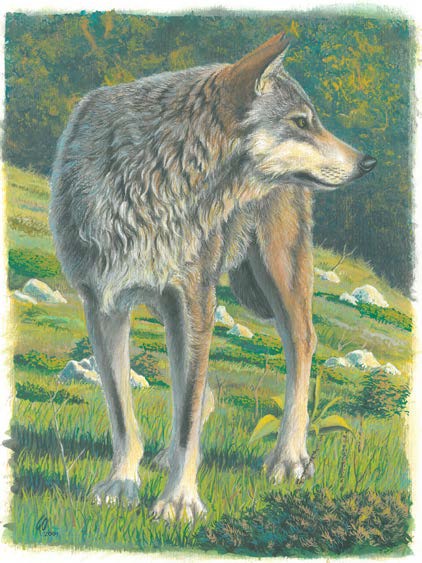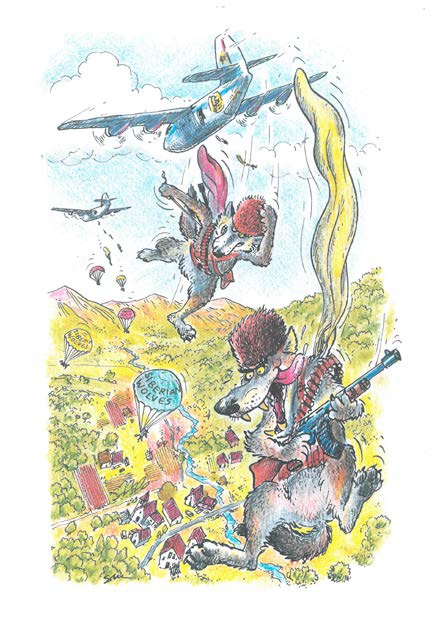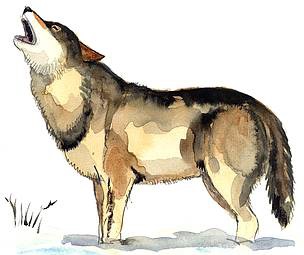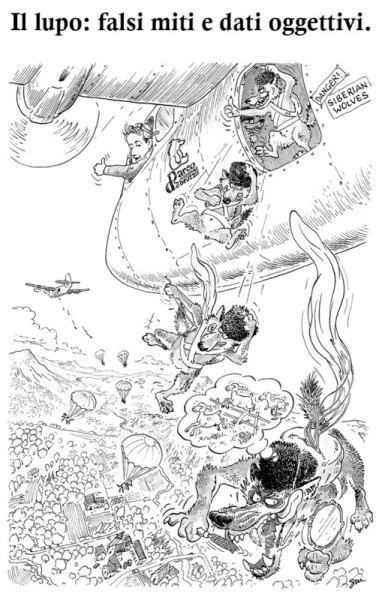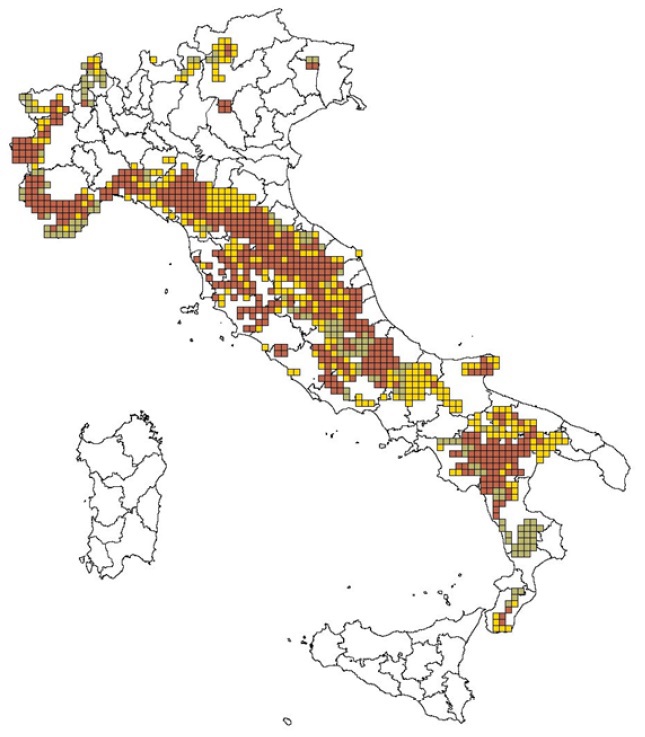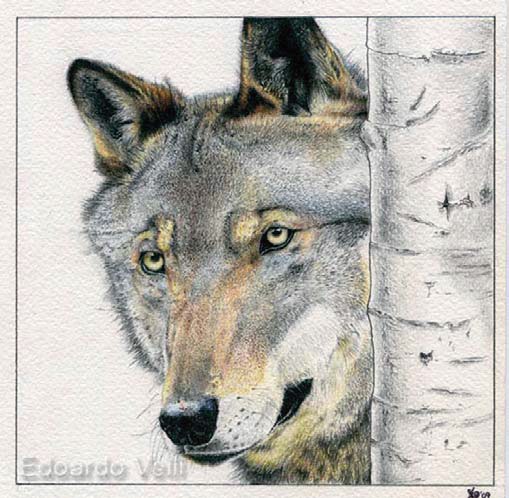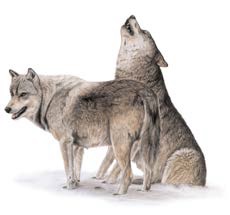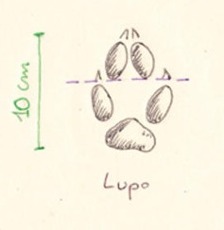Walking along the paths and country roads it is easy to come across signs of the presence of the wolf.
The wolf has always lived beside man; he has been venerated, feared and persecuted. In ancient times it was a legendary animal; the foundation of Rome refers to the patron wolf and in Greece was considered the animal of the god Apollo. The Egyptians worshipped the god Upuaut, a man with the head of a wolf, who led the pharaohs in hunting or war. The figure of the wolf then began to appear in tales and fairy tales of all kinds; normally it was the villain character.
Up to 800 the species was spread over the entire peninsula and then suffered a drastic reduction due to the persecution operated by man. The wolf was considered a 'harmful' species and its killing was encouraged by any means; the predation on the domestic animals has always been the reason of the hatred towards it. In the past there was also the job of 'wolfer' or the wolf hunter.
At the beginning of the 80s of the last century there were few nuclei left along the central-southern Apennines. In the following decades there has been a gradual expansion due to various factors: the establishment of national and European laws to protect it, the abandonment by humans of mountain areas, the increase of wild ungulate populations and the creation of protected areas.
Currently the wolf is present on the Apennines, the Western Alps and the Dolomites as well as in the Tyrrhenian hilly areas; it is estimated that today there are about 2000 wolves. It is mainly the areas with high forest cover that attract the species.
No operations of reintroduction or repopulation of wolves have ever been carried out in Italy. There are urban legends that wolves are even parachuted.
The wolf is able to hunt animals of very variable size (hares, wild boar, deer, roe deer); on average it consumes 3 to 5 kg of meat per day. It selects its preys focusing mainly on old, young or sick animals. It has teeth suitable for cutting and tearing meat and food is eaten in large mouthfuls. Its diet also includes fruits and vegetables.
The wolf reaches a height of 60-80 cm at the shoulders and a length of 100-150 cm. The tail can be 30 to 50 cm long. The males are larger and heavier than the females; the weight varies between 30 and 40 kg.
Wolves walk by supporting the phalanges in addition to the large lobed plantar bearing. The footprints resemble (in shape and size) those of a large dog, but are longer. Another difference is that they are aligned, one after the other, as the animal proceeds straight without digressions. It moves with four gaits: stride, trot, run and gallop. It can travel great distances (even 100 km) without stopping.
The coat has colors ranging from gray (in winter), to reddish-brown (in summer). It consists of two types of hair: the 'wad' that thermally insulates the body and the 'bristle' that protects from moisture.
The wolf is able to pick up very weak sounds, imperceptible to man. His eye is able to intensify the light sources so that he can see well even at night. The wolf’s sense of smell is extremely more sensitive than the human one which allows it to feel the preys at considerable distances.
Wolves use urine or excrement to mark their territory. These are often left along dirt roads and paths.
The wolf lives in herds; this allows a more effective defense of the territory and a more productive hunt. The pack is composed by 2 to 6 individuals and, on average, has a hunting territory of 100 km2.
The territory also includes areas called rendez-vous in which wolves gather, rest safely or where they leave the still inexperienced cubs.
In the pack there is the pair 'alpha' that is at the highest level of the hierarchical scale; this is the only one that reproduces. It also decides on activities such as movement, hunting and defense of the territory. The other members, of lower rank, are individuals born in previous years. The hierarchy in the herd is regulated through ritualized fights.
The matings take place only once a year, between February and March. The female gives birth in an underground den (or in a large hollow chestnut) and the gestation lasts about 2 months. Puppies can be from 4 to 7. The young, between the first and the fifth year of life, can leave the group looking for a partner. This phenomenon is called 'dispersion' and allows to colonize new territories even very far from the original herd.
Communication between wolves is very elaborate; it occurs through looks, growls, postures and vocalizations. Among the latter the best known is the howl with which the individuals of a pack search themselves and mark the territory. A myth that must be debunked is that The Wolf howls only on full moon nights.
The wolf is a shy animal and very difficult to observe live. It considers humans as potential threats and therefore avoids encountering them. Isolated individuals are sometimes seen near urban centers; they are scattered or attracted by food waste. In the last 150 years there has been no detailed report of wolf attacks on humans.
Poaching, performed with poisoned mouthfuls or firearms, is one of the main risk factors for the species.
